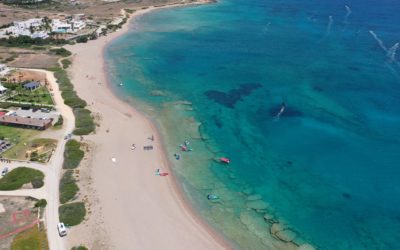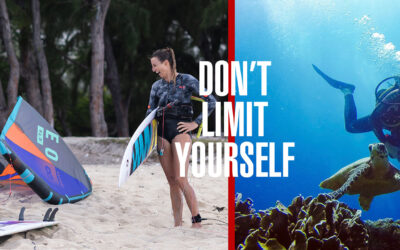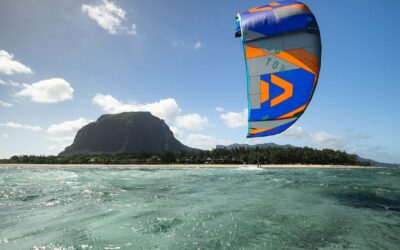What is Wingfoiling?
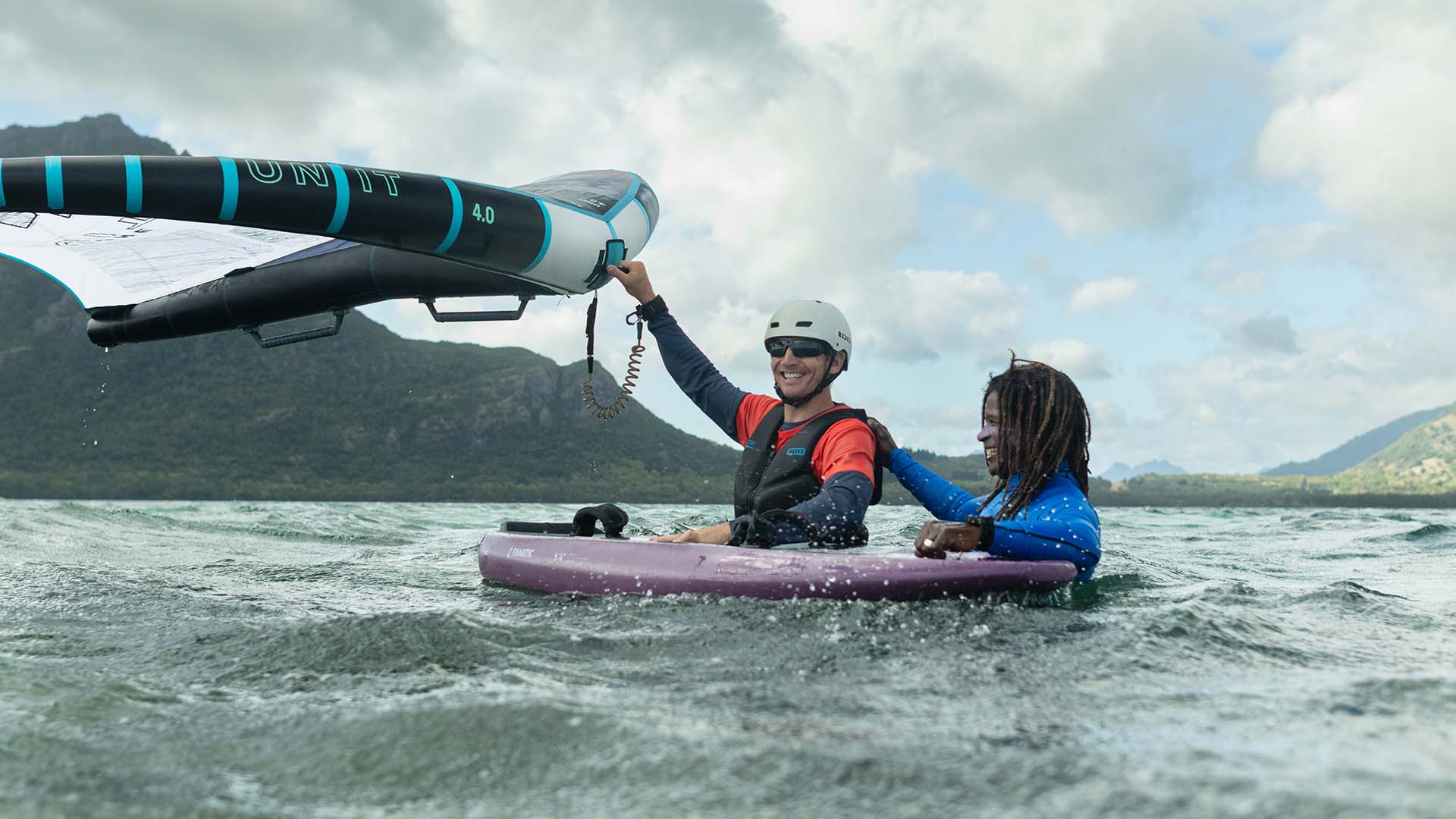
If you are unfamiliar with this new watersport, wingfoiling, or wingsurfing, is a mix between windsurfing and foiling, in this case using a wing, with the rider standing on a board and gliding a few centimetres above the surface of the water once a certain speed, known as lift, has been reached. The wing is held in the wingfoilers hands and slightly resembles a kite used in kitesurfing, but with much less surface area and without the lines attached. The foil replaces the fin – or daggerboard – under the board, and is more or less like a small airplane connected to a mast less than 1m long, enabling the board to glide around 50cm above the surface of the water.
The sensation of flying is very intense, with a feeling similar to windsurfing but without the mast and the sail attached to the board. The speed is generally slower, but the pleasure of flying at speed is really something else!
Wingfoiling courses by level
These days it is easy to find a watersports center that offers wingfoiling courses for beginners and for more advanced levels. These centers are often already kitesurfing and/or windsurfing schools.
To make the fastest progress, a wingfoiling course should be broken down into several sessions of 2 or even 3 hours, sometimes more, depending on how well you adapt to the equipment, the weather conditions and your physical condition, as well as your background as a kitesurfer and/or windsurfer, or even as a foiler in others disciplines. For those new to sailing and to board sports, some schools will teach you the initial stages of wingfoiling on a stand-up paddle board or a large windsurfing board, so that you fully understand the wind and how it propels you forwards (and upwards). Other schools will start your learning process by towing you along on their motorboat, so that you get to know the foil first, before you start flying the wing. There is no right or wrong way to learn, the main thing being to achieve the same result, i.e. to fly with peace of mind and a smile on your face.
Progress in wingfoiling is fairly rapid if the weather conditions are good when you are learning the initial steps. An ideal wind is steady and blowing at around 15-20 knots, which will make it easier for the rider to take off without getting too tired too quickly. It is rare to fly in the first few sessions, but once you understand how to maneuver the wing and to find the right position to control the board, you will be won over by this new discipline. When you first start out the board lifts up out of the water and then sometimes falls back just as quickly. Then you fly for 20 meters, then 200 meters, and finally move onto longer rides as soon as you understand how to stabilize the board, and therefore the foil. Then the next step is to learn how to turn, or rather jibe, the method which is most often used to change direction.
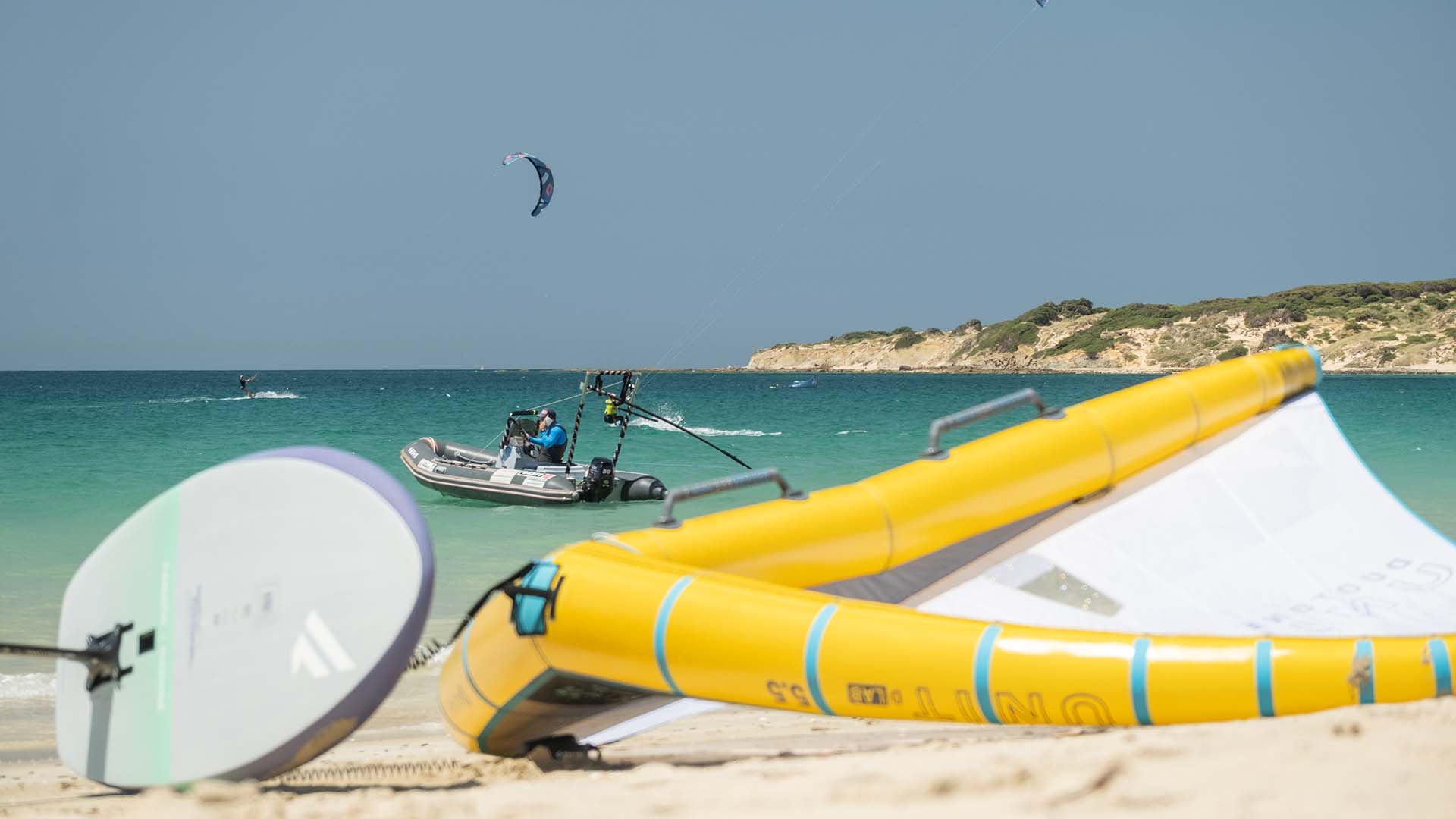
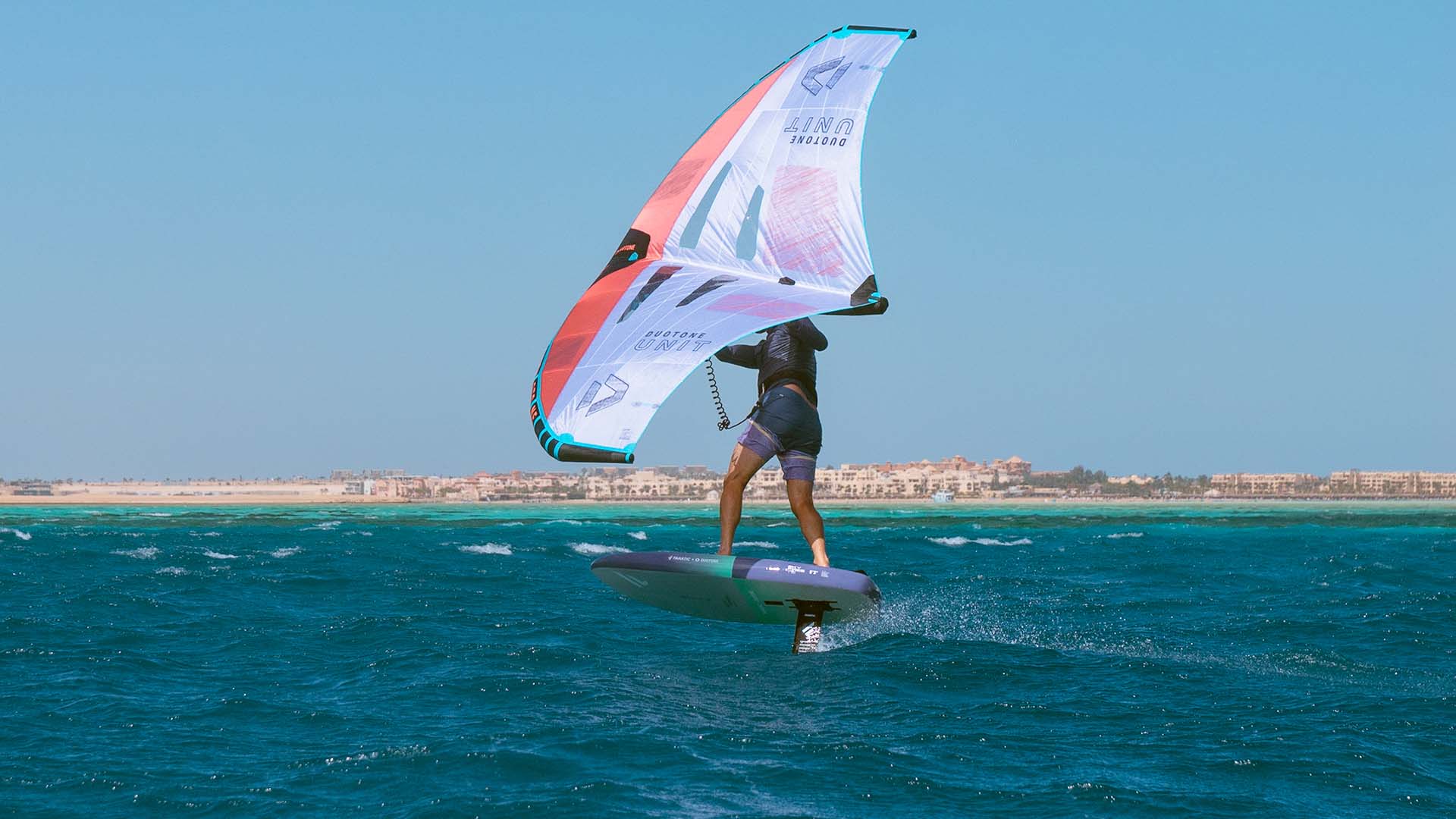
Is there a wingfoiling federation?
Today, wingfoil in France is linked to both the Fédération Française de Voile and the Fédération Française de Vol Libre. In a sailing school, your instructor will either have a windsurfing diploma, or a kitesurfing diploma, or a sailing diploma – or all 3. France only?
How to progress in Wingfoiling?
Some good windsurfers and/or kitesurfers learn wingfoiling on their own, but for watersports newbies and even some windsurfers or kitesurfers a wingfoiling course is highly recommended. On the one hand, you will achieve faster progression with the help of an instructor by yourself, as you will need to understand the wind and get used to the water. On the other hand, the foil has a sharp edge, so you might as well listen to the valuable advice you will receive on how to land properly in the water in the event of a fall, and how to get back onto your board.
When it comes to buying wingfoiling equipment, look for a board that is approximately 40 liters larger than your own body weight. For example, a person weighing 60 kilos will opt for a board of around 100 liters. Progress is fast if you practice often, and then you can move on to a less voluminous board. As for the wing, the perfect size for a single wing is 4 to 5 m², depending on your physique. This will get you from 15 to 25 knots. Don’t forget your leashes, so that you don’t lose your equipment on the water: One on the wrist for the wing and the other on the ankle or waist for the board. Choosing a foil that helps you to take off as soon as possible is very important. 1700-1800 cm² is the surface area of your front wing with a 70-80cm foil mast.
Once you have mastered your equipment, you may become pretty good at free-flying – releasing your wing while surfing in the swell – freestyling – jumping and looping – freeriding – going as fast as possible – or even foil surfing – riding the breaking waves. Whether you are foiling with your kite or SUP foiling with your paddle, foil surfing is magical … although you will need patience and practice to navigate the waves.
How to choose your wingfoiling school?
Choosing a wingfoiling school is not always easy. The price is not the same everywhere, and the teaching is not always identical from one center to another. Some instructors use their motorboat to teach you how to wakeboard before learning how to use the wing, while others will start by teaching you how to use the wing on a windsurf board – without the sail, of course – or on a stand-up paddle board. For those who swear by a particular brand which they are already familiar with, the brand can also have an influence.
Most wingfoiling schools in France are located by the sea, with more choice on the shores of the Mediterranean, for example near Hyères in the Var, in the Bouches du Rhône around Marseille, and in Languedoc Roussillon between Montpellier and Leucate. Rest assured, wingfoil centers can also be found all along the Atlantic coast, in Brittany in particular, or in northern France and near inland lakes.
The ION CLUB centers, located in some of the world’s most famous spots, are similarly priced and equipped with Duotone and Fanatic wingfoiling collections.
The evolution of wingfoiling equipment is quite impressive, and today it is suitable for all sizes, men and women alike. In short, it is a sport for everyone, and doable almost anywhere as long as there is sufficient water depth and a little wind. In short, wingfoiling is magic!
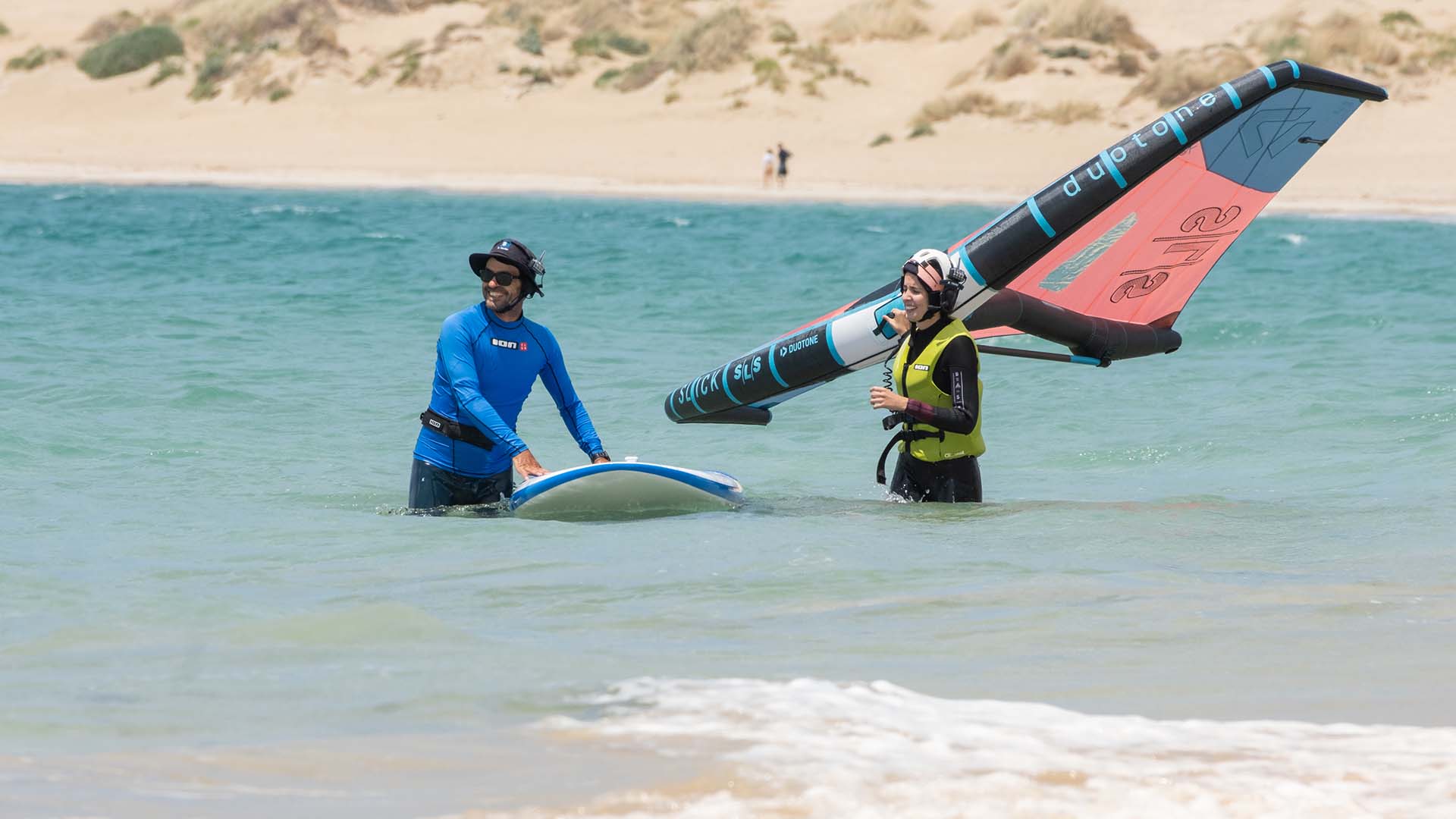
KARPATHOS PACKAGES
FROM SEPTEMBER 28TH TO OCTOBER 13TH 2024 ENJOY EXCLUSIVE ION CLUB PACKAGES HOTEL + SPORT + TRANSFERS Our exclusive 7- day packages offer you much more than just a stay. Immerse yourself in the experience of windsurfing or wingfoiling under the sun and on the...
SCUBA CARIBE x ION CLUB
Diving and Surfing: A Natural Collaboration for Ocean EnthusiastsWhen one thinks of the ocean, two activities immediately come to mind: diving and surfing. These two distinct passions, while different, are remarkably complementary. In Mauritius, two institutions, ION...
Kitesurfing in Mauritius: Essential info !
Mauritius, located in the Indian Ocean to the east of Madagascar, is a real treasure trove for kitesurfers. This tropical, volcanic island is not only popular with tourists in search of paradise beaches, hikers and divers, but also with kitesurfers from all over the...

